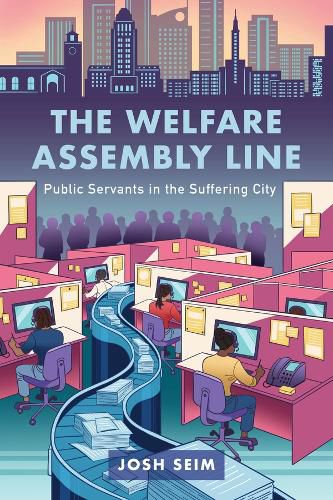Readings Newsletter
Become a Readings Member to make your shopping experience even easier.
Sign in or sign up for free!
You’re not far away from qualifying for FREE standard shipping within Australia
You’ve qualified for FREE standard shipping within Australia
The cart is loading…






Despite claims that we live in a "post-welfare society," welfare offices remain vital not only for those who depend on them for benefits but also for those who depend on them for a paycheck. This book, a theory-driven case study of the Los Angeles County Department of Public Social Services, examines how welfare work has transformed to allow a department of just 14,000 to serve more than a third of the county.
Josh Seim argues that frontline workers at this agency-who are mostly Black and Brown women-have become increasingly proletarianized. Their work is defined less by their discretion and more by a lack of control over the productive process. This is enabled by a "welfare assembly line," where a high division of labor and heavy use of machinery resemble production regimes in factories and fast-food restaurants. With implications beyond the welfare office, The Welfare Assembly Line is a crucial addition to the broader national conversation about work, social policy, and poverty governance.
$9.00 standard shipping within Australia
FREE standard shipping within Australia for orders over $100.00
Express & International shipping calculated at checkout
Despite claims that we live in a "post-welfare society," welfare offices remain vital not only for those who depend on them for benefits but also for those who depend on them for a paycheck. This book, a theory-driven case study of the Los Angeles County Department of Public Social Services, examines how welfare work has transformed to allow a department of just 14,000 to serve more than a third of the county.
Josh Seim argues that frontline workers at this agency-who are mostly Black and Brown women-have become increasingly proletarianized. Their work is defined less by their discretion and more by a lack of control over the productive process. This is enabled by a "welfare assembly line," where a high division of labor and heavy use of machinery resemble production regimes in factories and fast-food restaurants. With implications beyond the welfare office, The Welfare Assembly Line is a crucial addition to the broader national conversation about work, social policy, and poverty governance.